To humans, the Northern Saw-whet Owl (hereafter saw-whet), our target species at MSRW’s owl-banding stations, is cute. It is diminutive, docile, soft and fluffy, and has big beautiful yellow eyes.
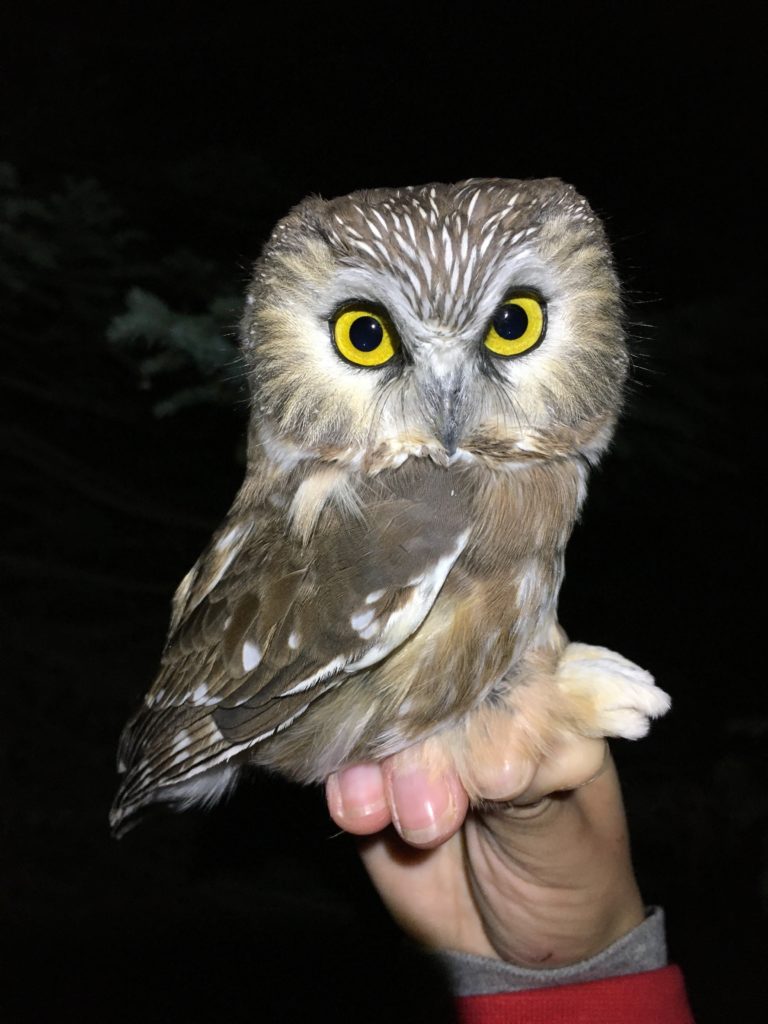
Saw-whets are sit-and-wait predators, sitting on a low branch waiting for prey to come by. Their usual prey are mice, especially deer mice, and voles. So if you are a deer mouse, you don’t think of saw-whets as cute. Rodents and other small creatures know saw-whets as lean, mean, mouse-eating machines! And for good reason. Like all owls, saw-whets have an array of physical and behavioral adaptations to make them efficient and effective night predators.
Let’s start with that face. Owls have very ‘flat’ faces with large forward-facing eyes surrounded by feathers radiating outwards, which is known as the facial disc. The large eyes with a relatively large pupil and greater number of rod cells allow more light to enter so the owl can see better in dim light. Owl retinas have relatively few cone cells so they don’t see much color.
Then there is the unique (among birds) ability to turn their heads up to 260o like the owl shown below. Owls have extra and specially modified vertebrae in their necks that allow them to do this. But why have this ability? Owl eyes are forward-looking, which allows binocular vision (seeing in three dimensions) but prevents most peripheral vision. In addition, owl eyes are elongated tubes, not ball-shaped, so they can’t move their eyes from side to side. Thus they have to turn their entire heads to see to the side or back. And it certainly helps to see and hear potential prey (and predators) in all directions if one can swivel the head up to 260o.
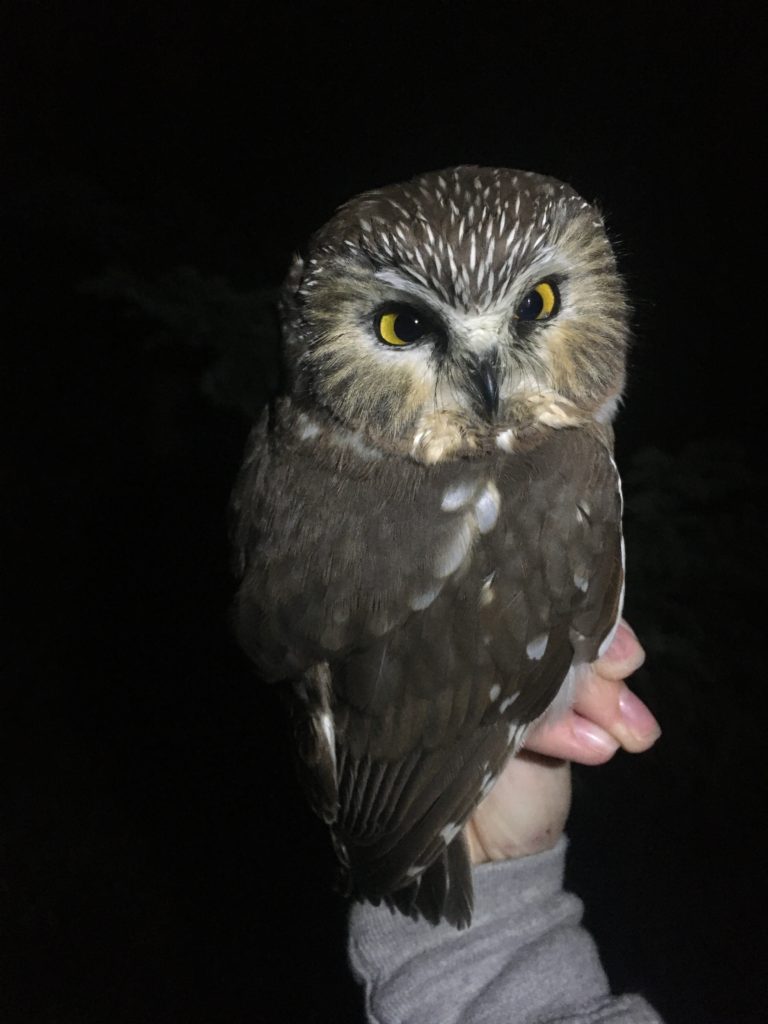
The flatness of the face and facial disc help to funnel sounds to the large ears, which are located at the edge of the disc. Owls can move the feathers within the facial disc to alter the sound wave focal lengths, enabling them to hear better at different distances. As part of their legendary hearing abilities, one ear is located slightly higher than the other to help them pinpoint sounds in the dark. Check out the ear-opening of this saw-whet!
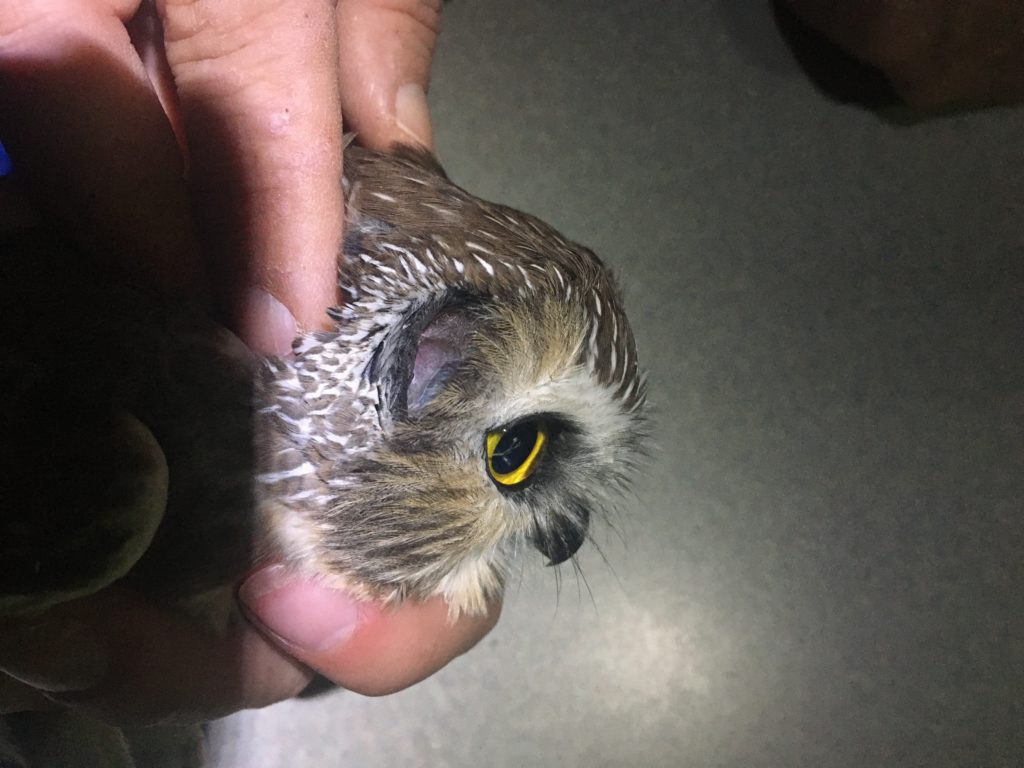
The next set of adaptations is related to the owl’s famous silent flight. Owl feathers are very soft and fluffy, muffling the sound of air moving past them as the bird flies. A great adaptation is on the leading edge of the wing, as shown in this photo. Those comb-like extensions, known as flutings, break up air currents flowing noisily over the wing. These adaptations allow the owl to sneak up and nab their prey before the hapless critter knows what’s happening.
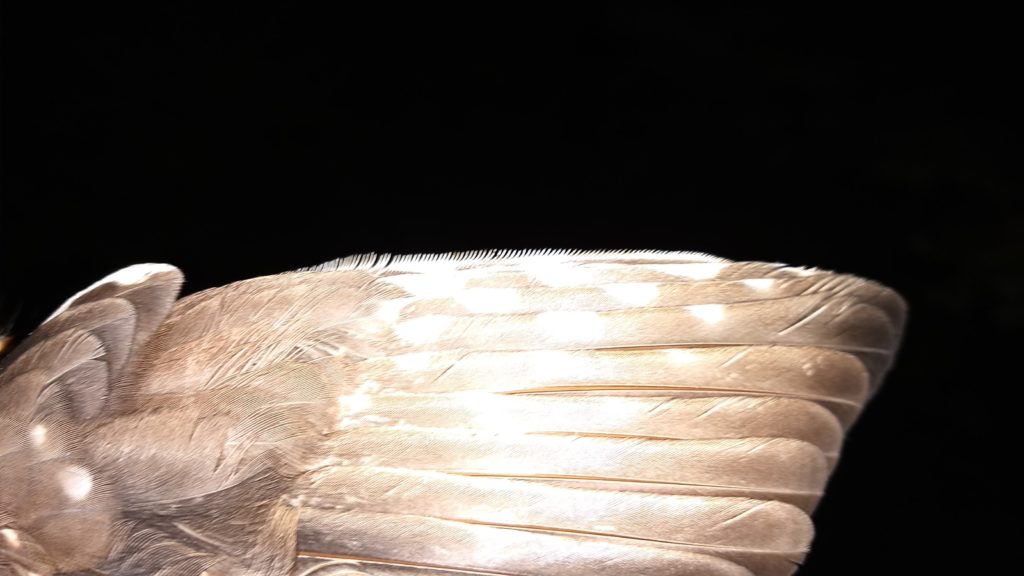
Finally, the talons – the business end of any owl. On saw-whets, the talons are razor-sharp, long, and decurved. Think kitty claws on steroids! As any owl-bander can attest, they do draw blood and they do hurt. Occasionally a saw-whet in the hand will grab and squeeze, giving the bander a taste of what the last moments of a mouse are like.
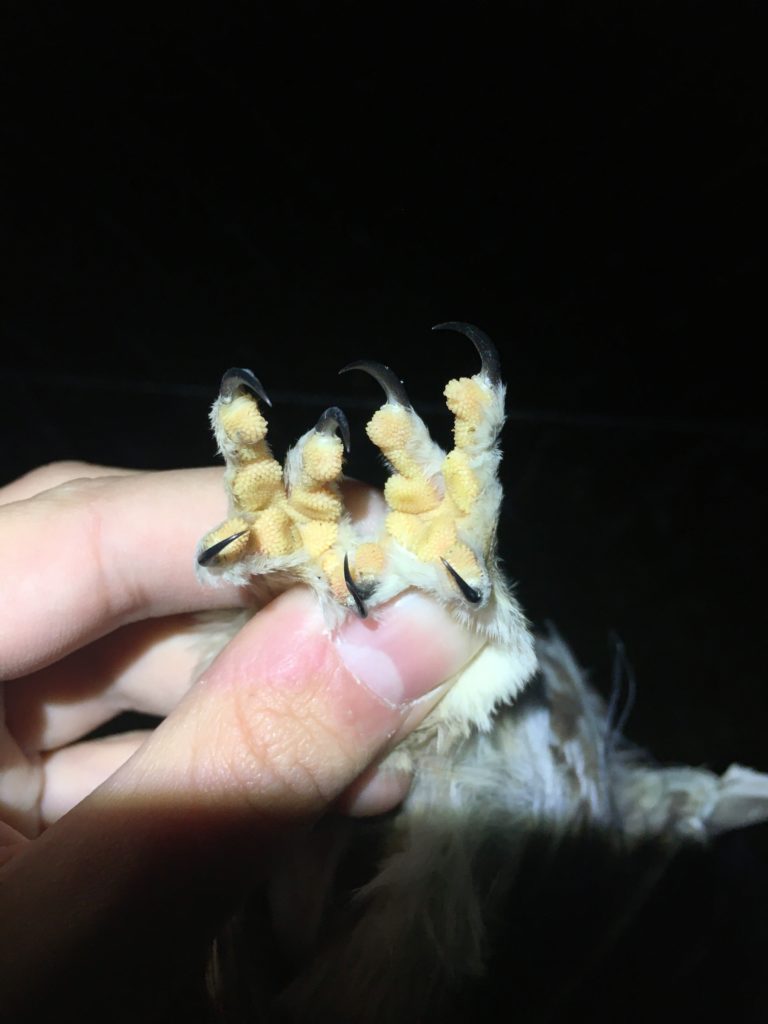
To detect and capture their prey, saw-whets use all of these adaptations. Saw-whets are so small that they can’t eat an entire mouse or vole in one sitting. They eat half, usually the top half, and save the rest for later. Like all owls, saw-whets cast a pellet of undigested fur and bones about six hours after eating.
Owl-banding totals September 18th through October 26th:
Northern Saw-whet Owl: 575
Long-eared Owl: 9
Barred Owl: 2
-Nancy Drilling, lead owl-bander

